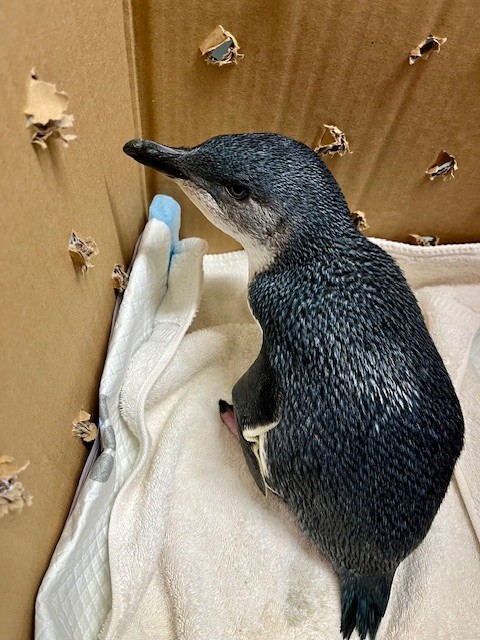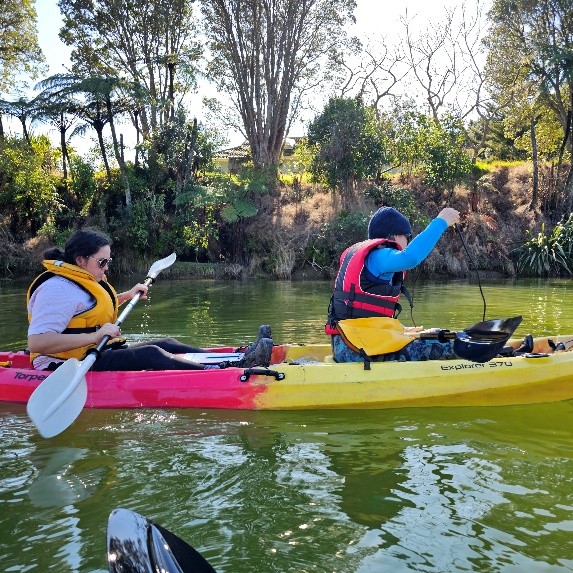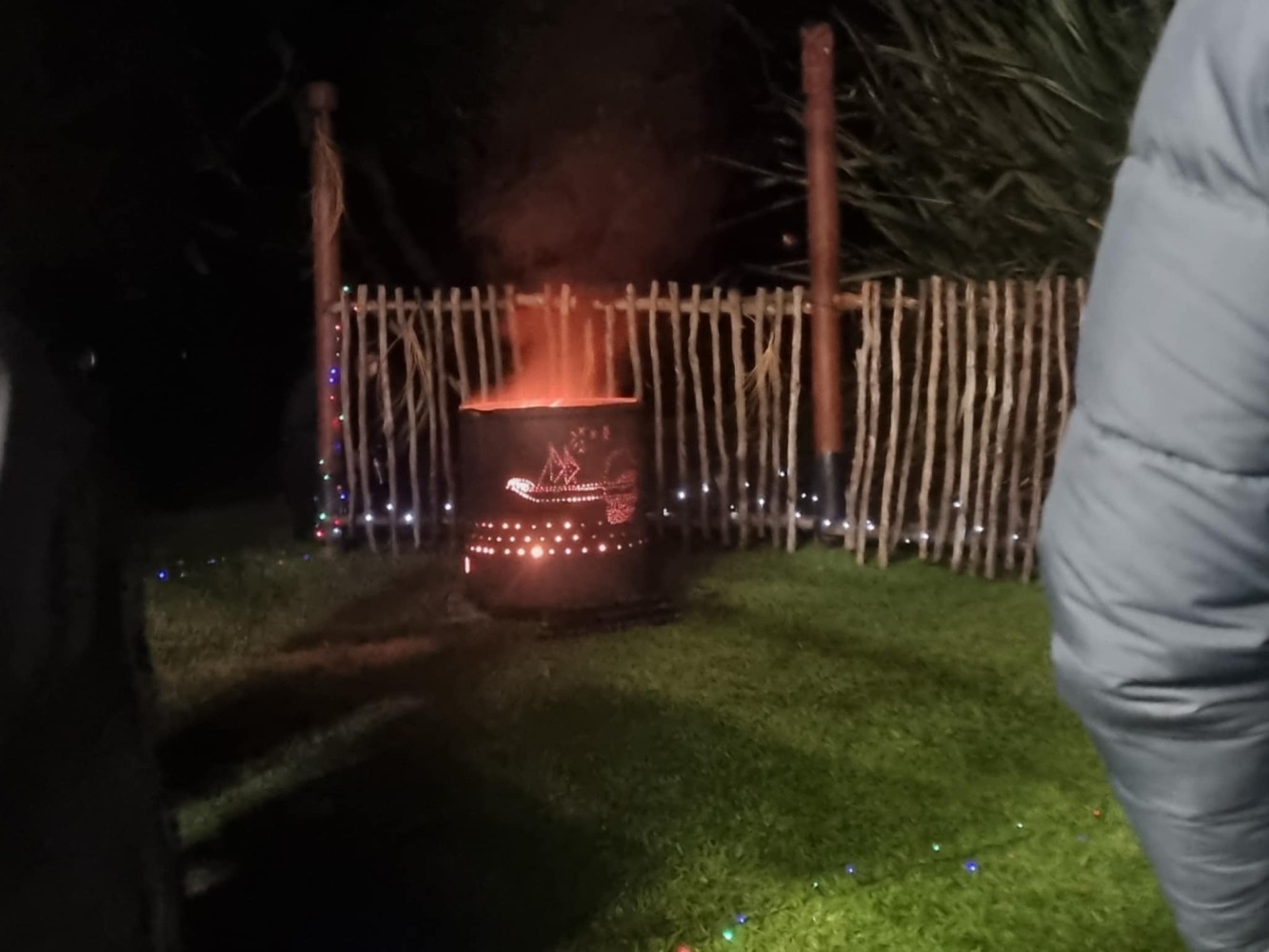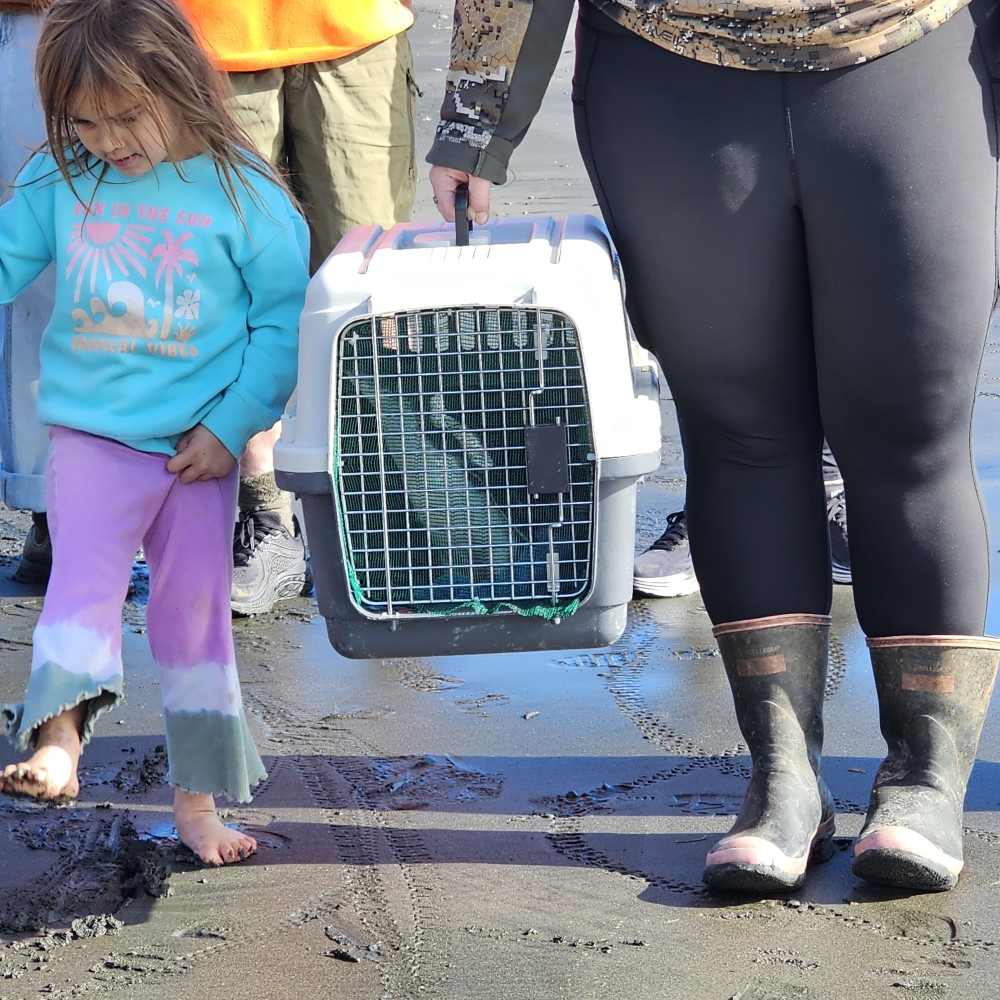
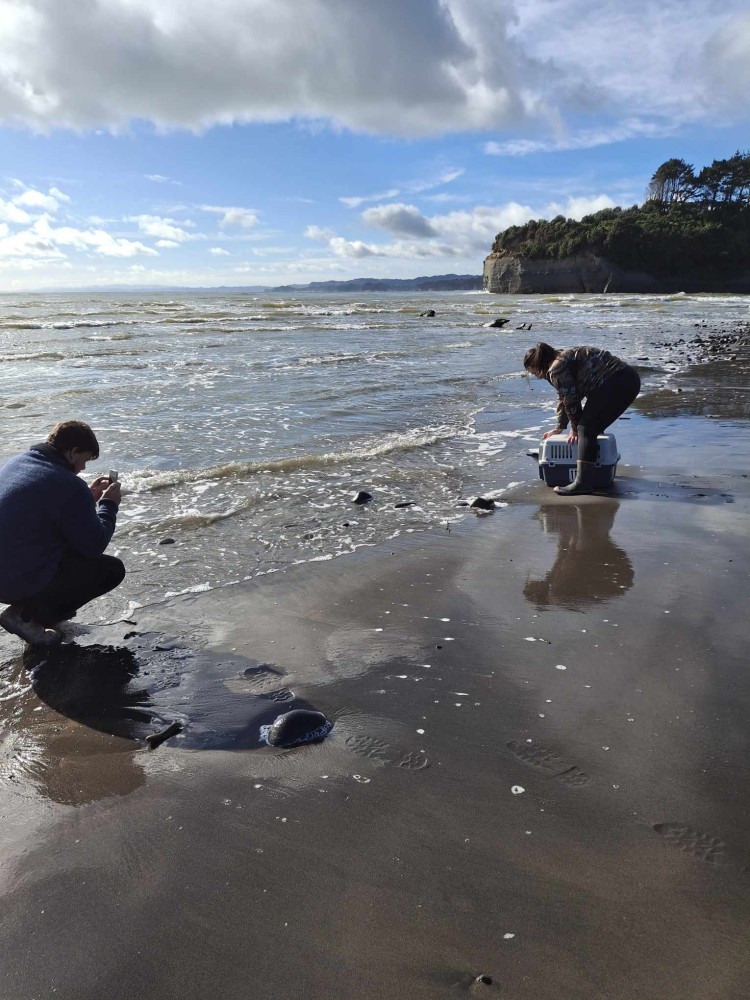
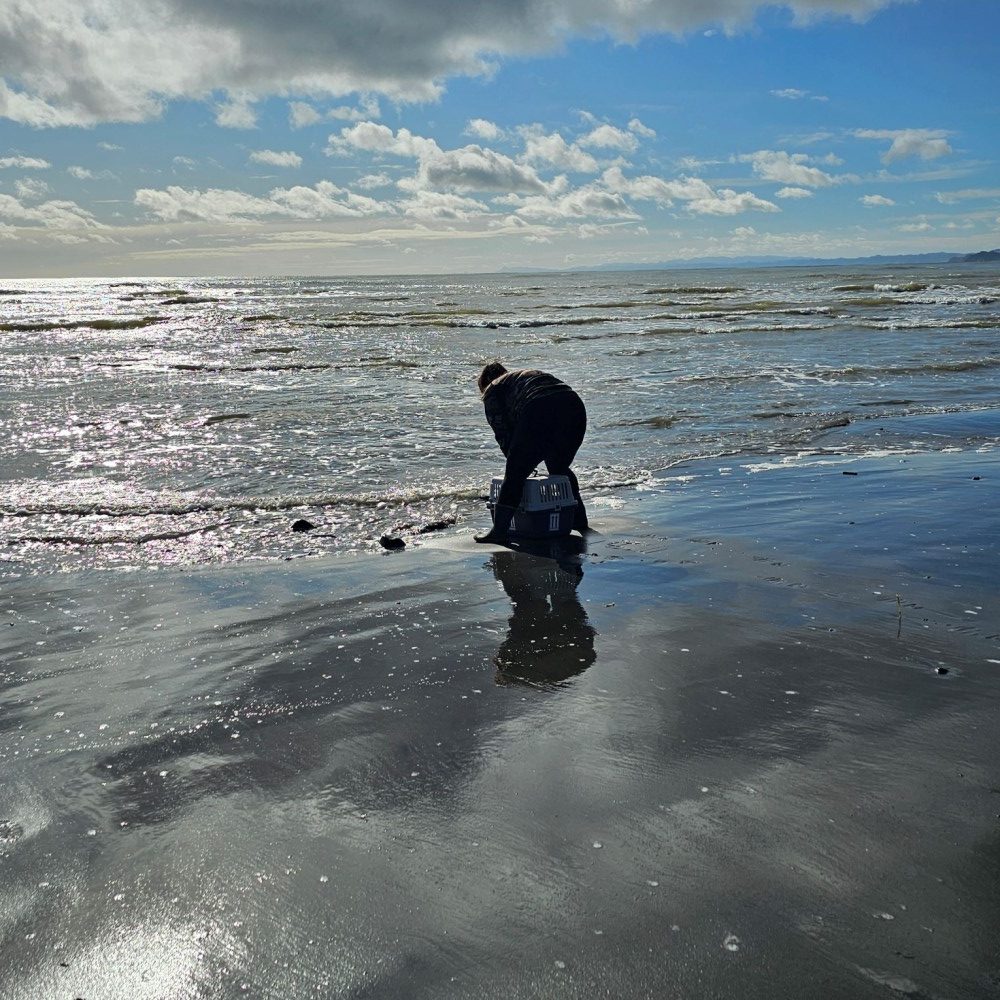
This is the time that our Kororā will be beginning to find their mates and build their nests ready for the nesting season. You may have noticed more activity along the coast recently as they come and go more and more frequently from now right through until the end of the breeding season. We currently have 56 microchipped Kororā at Urenui and 22 at Wai iti. Kororā return to the same colony every year so we are able to record ‘recapture’ data to see if our kororā are maintaining healthy weights and monitor their nests to see how many chicks are fledged each season. Each year we hope to add more chipped kororā and more nests to our monitoring program. Last season we fitted two of our kororā with GPS trackers so we could see how far they are swimming to forage for food. Compared to the colonies in Ngāmotu, our kororā do not need to go too far, which most likely means that we have enough kai for them just off our coast, which is great news!
Kororā are more vulnerable at this time as they are spending more time on shore where they are susceptible to predation, particularly from dogs, so it is important to keep your dogs on a leash if you are walking them along the coast and do not let them roam in our coastal areas.
In late April this year a concerned community member found a Kororā at Urenui beach with a broken flipper. In the absence of our Taiao field person, one of our kaitiaki stepped in. After contacting DOC for advice, the kororā was named Kōmaru and given a safe home for the night before being taken to NP Vet Group for an initial assessment. He was then sent to Wildbase for rehabilitation. The amazing teams at NP Vet Group and Wildbase Hospital at Massey University did a fantastic job rehabilitating Kōmaru and he was released back into the sea at Urenui beach two months later in June. He sure looked happy to be back out in the ocean putting on a show for us as he ducked and dived back out to sea.
